The Club Renaissance at IIIT
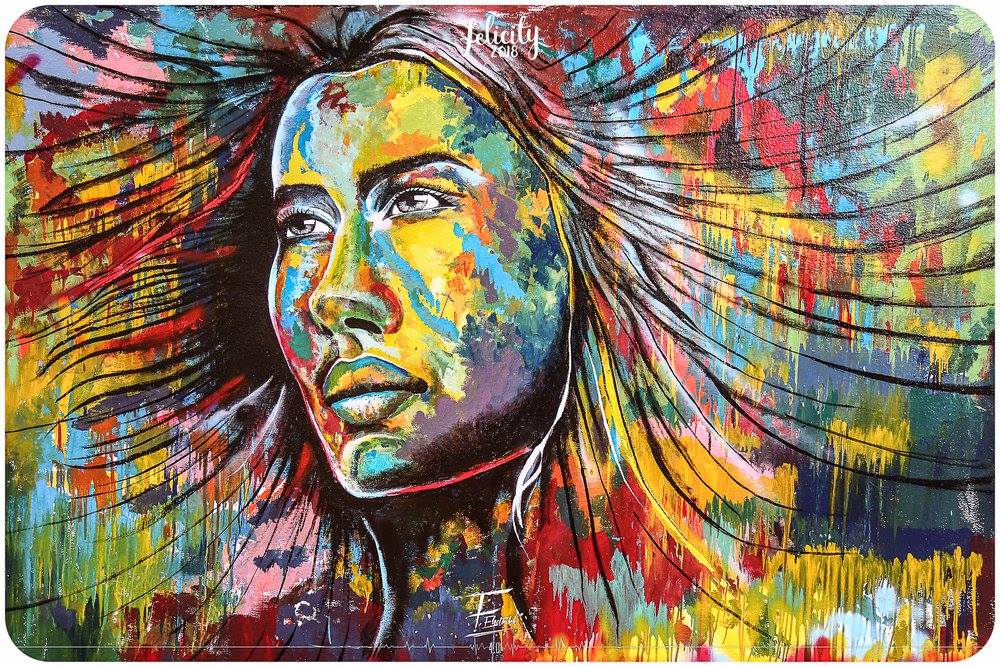
Last year saw the beginning of the Art Society at college, and the Debate Club took on a completely new life. Both clubs were at their peak during Felicity this year, with the Debate Club conducting the IIITH Parliamentary Debate which had a nationwide participation of more than twenty colleges, and the Art Society, among other things, collaborating to paint the beautiful mural of the lady with the flying hair, that now adorns several social media profiles.
Tanmai Khanna talks about his experience with debate, and helping revive a club at college, and Mayank Modi talks about art, and what it takes to start a new club on campus.
Note: These pieces were edited into articles based on some questions posed to the authors by the editors.
‘Never debate, always discuss’
Tanmai Khanna
 Credits – TED talks
Credits – TED talks
On the debate scene in college two years ago
When I entered IIIT Hyderabad, I noticed that there was a debating club but it was very different from the sort of societies I saw back in DU, where I had studied for a year. Unlike what I had seen, the club did not have a group of constant members, but the sessions were open. I soon realised that this was because of the crazy academic schedules. While I do not claim that I have revolutionised the club in any way or brought any significant change, I thought that at the time, I didn’t really see a love for debating in existing members.
On prior experience with debate
I used to debate a little bit in school but I started properly in 2015 when I joined the Hansraj Debating Society. We had debating tournaments almost every weekend and even in college we had a lot of time for extracurricular activities and hence I started debating and taking part virtually everywhere. I lost in tournaments miserably at the start, but much like any activity, it started getting better with practice.
I was fascinated by the way the people at the society fought with words and the amount of knowledge they had. Interestingly, what appealed to me more was how much fun the society was having. They used to hang out together all the time and were a very tightly knit group. For the year that I was a part of it, we were the best of friends and almost a family. I made lifelong friends with these people and what really attracted me to them was that they weren’t pretentious at all. They weren’t the cliched elitist debaters that everyone thought them to be, but just crazy people like everyone else who enjoyed constantly putting themselves and their capabilities of argumentation to test. These qualities are what compliment debating and make it a lot more fun and that’s what I envision for the debating club in IIIT.
On revamping debate at college
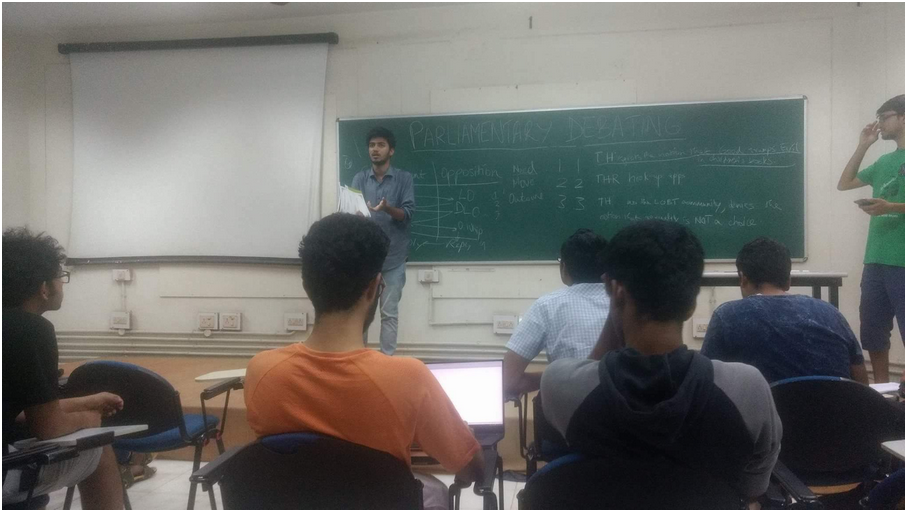
When I came to IIIT, I wanted to spread the kind of debating that I had learnt and through that, debating in general. My aim for when I became the coordinator was to try and instil a sense of belongingness in the students who were members and using the love of debating as a common trait, try to make this club as active as it could be.
Even when I was in my first year, I started conducting sessions and mock debates whenever it was possible (keeping everyone’s schedules in mind). I wanted these students to take this activity seriously and to make that possible we tried to get some interested members to come again and again to form a sense of familiarity to the club and debating.
We conducted a national level debate tournament this year, which I think really helped in making club members realise that they are part of something important, and capable of much more than they believe. It would have been almost impossible for us to conduct the tournament, that too on working days, but the Organising Committee worked very hard and I think they themselves feel happy to see the fruit of their labour, thereby instilling a sense of “patriotism” to the club. This, I feel, is very important in the first year students as they will be the future leaders of this club.
The IIITH Parliamentary Debate is according to me an important milestone for our club as it gave our students a unique insight into the Parliamentary Debating world as they witnessed nationally recognised debaters participate and fight to win the tournament over a course of three days. I was awestruck the first time I saw my seniors in DU debate. I hope that the members of the club saw these debaters and were inspired, just like I was, to one day be able to speak with such skill and impact.
On debating and me
Debating and my experience in DU has pretty much shaped who I am today. I have become more confident and open minded. Before debating, I didn’t care much about gender issues, thought “feminazi” was a thing, and thought that animals were made to be our food.All this changed when I was forced to, by this activity, defend different sides of issues in society and once I realised that I was conveniently ignoring a lot of information, it also forced me to learn about all sides and their justifications. Then it was only natural that I weighed these justifications and started forming my own opinions, soon aligning my actions to satisfy my conscience.
On understanding issues better
I find it appalling that a lot of people these days think debating is just about one side winning and not constructive discussion. The reason we allot sides in debates is only so that each side can critically focus on their side. What comes out of a debate is not a winner, but a more nuanced and evolved understanding of people and the social structures of the world we exist in. In a society where different societies are happy in their own echo chambers, I think it is absolutely imperative for people to debate and discuss issues for societies to evolve. This is true for conservatives, liberals and pretty much everyone along the political spectrum.
An interesting example of this is an experience from a debate tournament which I took part in very recently at Christ University (Deemed to be), Bangalore. The motion/topic was “This house supports feminist campaigns which glorify housewives” and we were the proposition which basically meant that I had to defend the glorification of housewives by feminists.
Now, my general views on the issue were along the lines of how a lot of women are coerced or conditioned into becoming housewives and that it is inherently patriarchal and sexist and hence feminist campaigns should decry it.
However, in the twenty minutes given to us to make a case, we started thinking about it and realised that while all of that might be true, there are a lot of women, and there will be a lot of women who will continue to be housewives, perhaps because of their religion, tradition or even coercion. Since the feminist movement constantly says that a more feminist choice would be to leave the households, and in many liberal circles, being a housewife is often seen as being a sell out to patriarchy or as a lack of aspirations, these women and even conservative families often get severely antagonised and refuse to be a part of the movement. Because of this, a lot of the issues that these women face, like domestic violence and unequal treatment in the house cannot be dealt with because their views aren’t a part of feminist discourse and any effort made to help them will be seen as patronising. Hence, by glorifying housewives (not the fact that women should be housewives), we can make society recognise their work which largely goes unnoticed and uncredited, and once we have their support, we can go forward in our endeavours to make these households more feminist, instead of offering leaving the household as the only option, which may not be accessible to a lot of women by choice or consequence.
This of course, was only one of the arguments and may even be incorrect, but the point is that it forced me to think against what I know and what came out of it was a more nuanced understanding of feminist issues where now the reception of a message becomes an important consideration and not just the principles of the message.
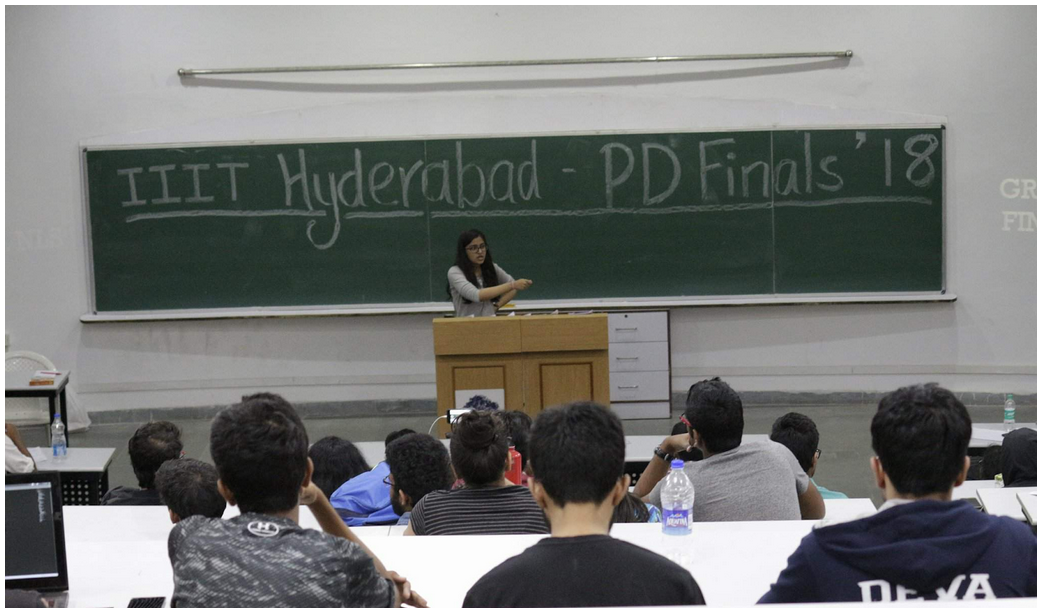 A speaker from NLS Bangalore makes a point. Credits: Vijayraj
A speaker from NLS Bangalore makes a point. Credits: Vijayraj
I think if you try very hard, you can live an entire life without ever giving a fuck about these issues or about society, but in a democracy, everyone is given a say in how the future of our country will look like. It is important then that people think critically and to the best of their capabilities, try to be fair to opinions from all sides and constantly debate with others and themselves to evolve and try to become better and more responsible citizens.
Drawing Alone, Drawing Together, And Everything In Between
Mayank Modi
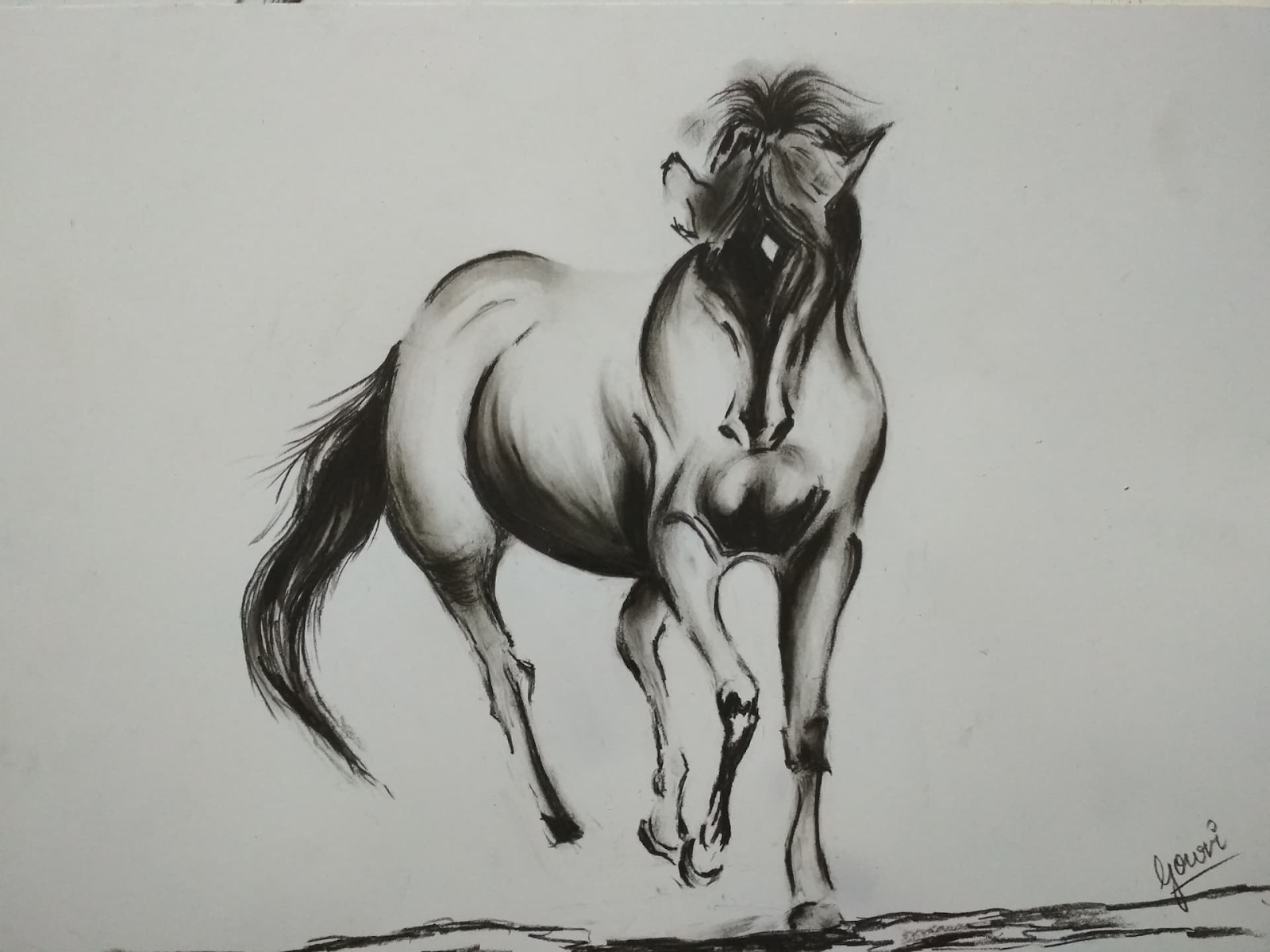 Art by Gowri Lekshmy. Credits: Mayank Modi
Art by Gowri Lekshmy. Credits: Mayank Modi
The Art Scene At IIIT Before The Society
We are definitely not the the first generation of artists at IIIT. There have been many artists before us and there have been art events where people have collaborated in bigger numbers than us.
Prateek Pandey painted the whole wall leading from NBH to Vindhya canteen on his own. Faculty organised events have seen Himalaya being painted with abstract art. An attempt at 3D painting was also made – the now worn out painting on the road between Vindhya and Himalaya was meant to be a hole in the ground with lava spewing out. People have always made attempts to draw and paint on the walls of their rooms – some creating masterpieces – but these eventually get painted over because of hostel rules. And of course, HSS classes existed as a platform for expressing art skills.
However, as a resident of the campus, I felt that the art that was created never made an attempt to ask for the respect it deserved. Artifacts created during Felicity may just end up as room decor in GH, the only salvation for paintings made during HSS was the possibility of being hung in rooms. The wall murals of OBH face oblivion under layers of whitewash and any art created by an individual would be confined to a probable social media post.
Before the society, it seemed like art in campus was mostly the means to do something, never the goal itself. During Kalakshetra, we wanted the campus decorated, and art was a way to do it. The art created during HSS was just to pass the course. After the goal was accomplished, the art was forgotten. Only the wall murals seem to have seem justice in this regard.
Art And Me
A nice art teacher in school helped me explore the field a little, but apart from a few competitions I didn’t do anything serious. My art skills were confined to decorating assignments for extra marks and diagrams in lab records.
Interestingly, where I actually discovered myself was in HSS classes. Shajil sir was lenient and encouraging and I was motivated to put a lot of effort into sketching and making sculptures. The TA at that time, Amitha was also appreciative and she roped me into helping with one of the wall paintings – the one with the dragon and dancing ladies. In time, I began exploring my shortcomings and was soon improving with every brush stroke. I helped make the not so great upside down painting of the girl in the city, and the next year a much better spray painting of the Kurt Cobain, Daft Punk, Tyler trio.
Meanwhile I kept stretching my own limits. Art boosted my self confidence and I marvel at how I can find solace in just spreading paint around.
The Conception Of The Society
In my second year, I ended up coordinating the wall painting for Felicity when two MTech students approached me regarding making a community where we can paint together and share what we know and our work. I liked the idea and one of the things that motivated me was my love for stationary and knowing that if we could have a club which college provided for, this would help me explore all sorts of different mediums.
The MTech students later backed out, but by then I had gotten things moving.
Making Art Society Legit
The first step was for us to find out what it takes to form a club. We headed to cult council and SURPRISE – all you need is 15 interested people and upto 3 motivated participants (the coordinators) who would be ready to deal with finances and organisation.
Then I started personally talking to the people who I knew were into art. Trying to see what the reaction would be to such a thing. Gauging their expectations from the club and meanwhile motivating them with the activities we could have. We made an inventory of things we would need and found their prices to form a tentative budget.
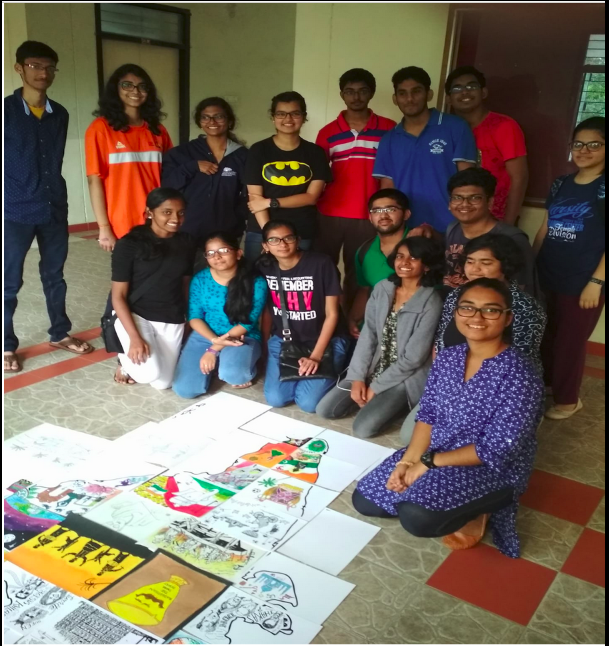 Along with the result of a collaborative art activity. Credits: Mayank Modi
Along with the result of a collaborative art activity. Credits: Mayank Modi
Next we had a few initial activities to help people feel attached to the group. The first one we did was to recreate the sceneries we drew as kids. All the time, we had to keep talking to the SLC chair, Radhika ma’am to show her we were actually serious about the thing. Her understanding nature and support were instrumental in making the society happen.
The Real World Issues Of A Club
The first issue was the lack of knowledge on how to start a club at college. The information is not documented anywhere at all. You have to talk to several people to hear their part and finally understand the dynamics.
We had delays in implementation – we had one activity planned for Spring ‘17 but the delay in a meeting for the budget allocation for the academic year 2017-2018 (which ended up happening in January 2018) meant that we would not know if the college had enough money to spare for a new club. The delays were due to unavailability of all the involved staff on the same date and some other reasons I am unaware of.
Coordinators without enough motivation was a huge setback. Some coordinators left in the very beginning. Thankfully, others came to help out when needed.
Inviting, motivating, sometimes almost forcing seniors to come to meets was one difficulty we faced as we knew that there were some good artists who we wanted to be part of bigger things, but academic schedules are cruel and there was always a lower than expected turnout from the seniors initially. There was also very little participation from the second year students which meant I had to be there all the time with the first year students. My personal schedule was also a hurdle. But now I’m really happy that the first year students are slowly taking the onus.
Conducting regular events involves – getting finances approved which takes time (I would love some changes in this process). Getting materials. And then striking a suitable date with all the interested people. And then praying that OJ is not hosted at the same time.
Future Of Art Society
My main aim for the club was to create a space where people can paint. We are still in negotiations for a room with the faculty. Inauguration of the amphitheatre will be a big help, post which I hope to get a room. At the moment the club for most of us is a reason to practice art. Meanwhile it is comforting that we have access to great stationary.
With the regular participation group we want to conduct events for a wider public. A ‘glow in the dark’ event is in the pipeline. Beyond that I would personally want to get the talented kids recognised beyond their social media follow-lists. I’m very eager to conduct a gallery showcase of our work in some considerable time and genuinely believe we have the talent and ideas to step into the art scene of Hyderabad.
Why I Feel Art Is Important
When language was made we tried to put everything we had to tell the other person into words. There still isn’t enough language to express your deepest feelings. You can’t describe the cringe when someone scratches a blackboard, or the happiness of returning home. In my opinion, it may be enough to explain to the other person that you are happy or sad and sometimes the reason, but you want to tell yourself more. Till date, I have not found a better medium than art. People might not always understand what you draw or create, but there is a different satisfaction in giving form to those impulses in your neurons.
Ah, Art!
It really mostly starts as some sort of satisfaction, there has to be a reason why people doodle their heart out in boring classes. But when you get good at it, when people start getting it, art becomes exciting. While you would love to keep looking at your work and feel good, what makes it real is appreciation. To be honest, seeing my picture as part of people’s DP’s, cover pictures, and stories-whether credits are given or not- just the fact that they liked it is heart-warming. It is exciting to think that one day I will pass out of college, and the mural will stay on as my mark in college and possibly a benchmark of creativity and effort (Although I feel like a proud asshole gloating – everytime I pass by it, I stand for a moment and just stare at it).
Making the art society has been fulfilling when I see that despite the various ways in which people can succumb to pressure in our institute – with PT, heavy coursework, research and so on – people are still able to see the beauty there is in art, and life.
 Absorbed. Credits: Mayank Modi
Absorbed. Credits: Mayank Modi

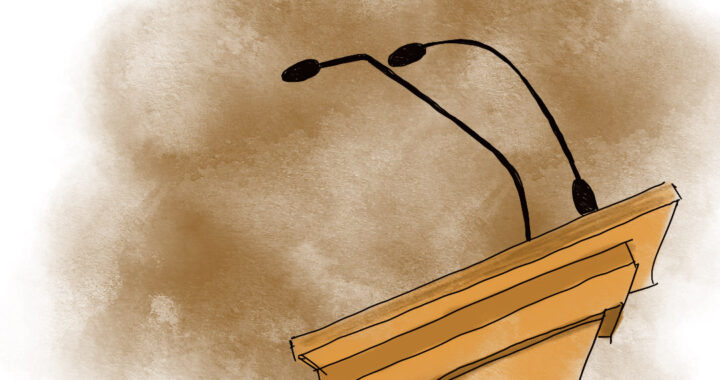 Cleaning up the Mess?
Cleaning up the Mess?  The Mess-y Situation
The Mess-y Situation  Qu’ils mangent de la grenouille! (Let Them Eat Frogs!)
Qu’ils mangent de la grenouille! (Let Them Eat Frogs!) 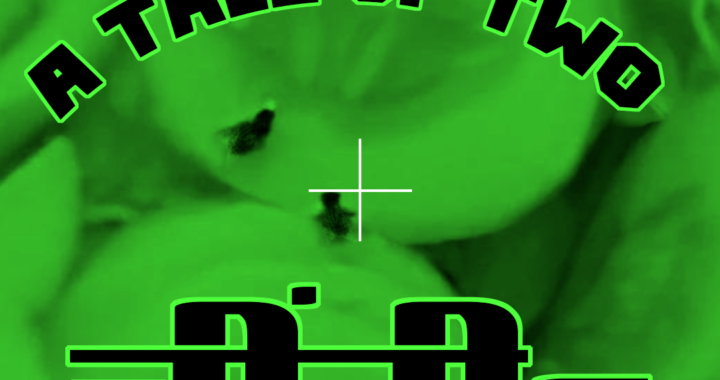 Tale of Two Cheenties
Tale of Two Cheenties  Peace of mind.
Peace of mind.  Boats and Valorant
Boats and Valorant 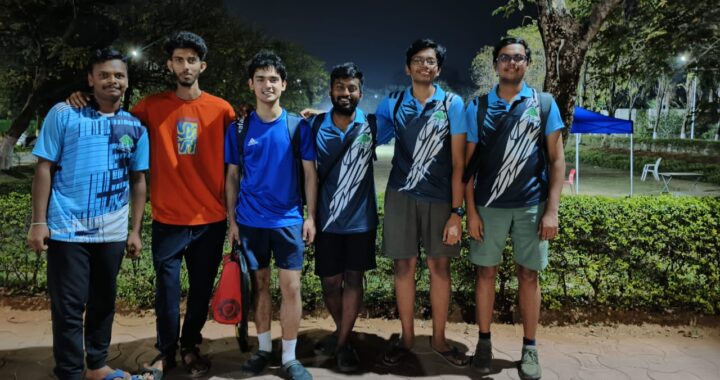 A perspective on sports in IIIT
A perspective on sports in IIIT 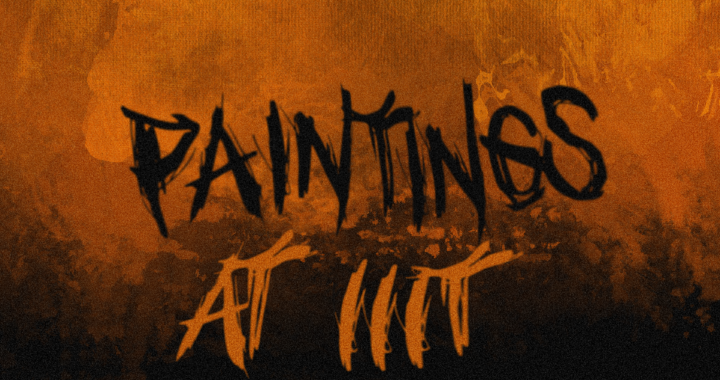 Paintings of IIIT
Paintings of IIIT 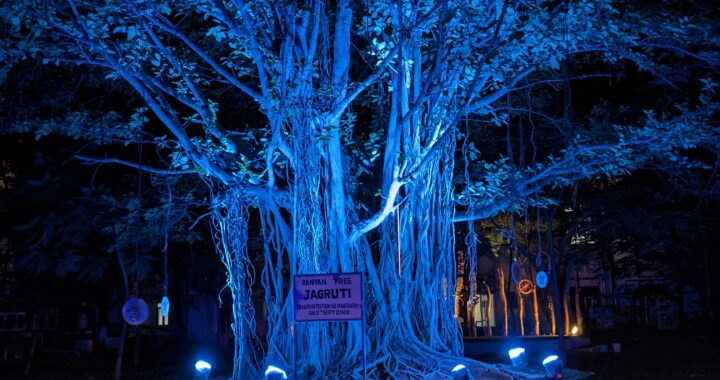 The Tale of Jagruti
The Tale of Jagruti
1 thought on “The Club Renaissance at IIIT”
Comments are closed.